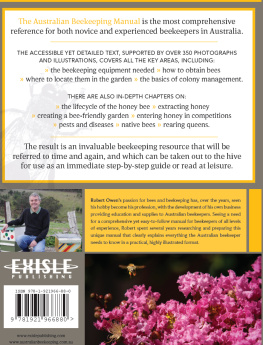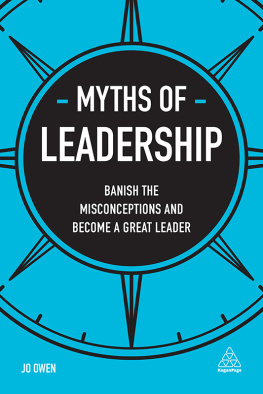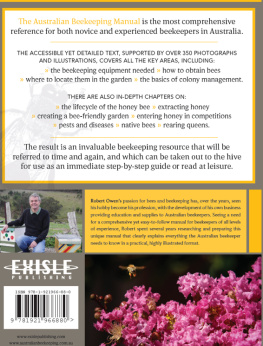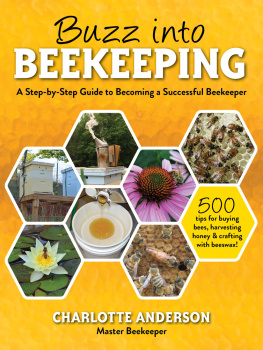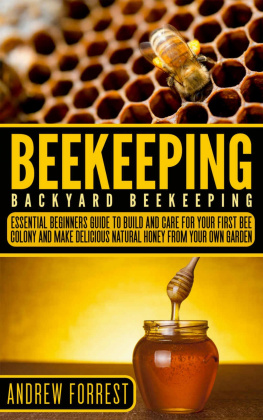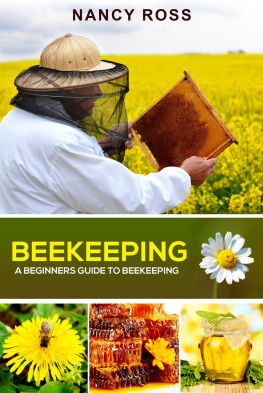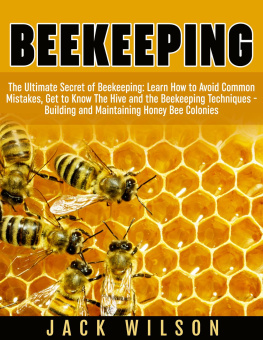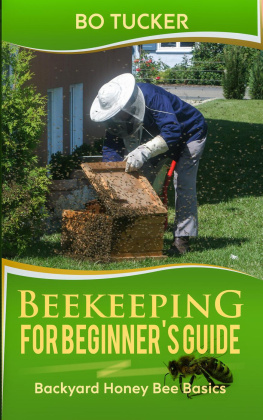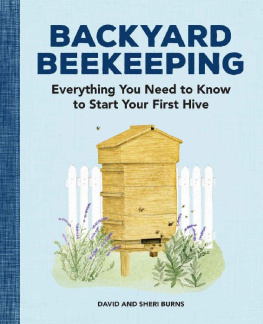Owen - The Australian Beekeeping Manual
Here you can read online Owen - The Australian Beekeeping Manual full text of the book (entire story) in english for free. Download pdf and epub, get meaning, cover and reviews about this ebook. City: Australia, year: 2015, publisher: Exisle Publishing Pty Ltd, genre: Children. Description of the work, (preface) as well as reviews are available. Best literature library LitArk.com created for fans of good reading and offers a wide selection of genres:
Romance novel
Science fiction
Adventure
Detective
Science
History
Home and family
Prose
Art
Politics
Computer
Non-fiction
Religion
Business
Children
Humor
Choose a favorite category and find really read worthwhile books. Enjoy immersion in the world of imagination, feel the emotions of the characters or learn something new for yourself, make an fascinating discovery.
The Australian Beekeeping Manual: summary, description and annotation
We offer to read an annotation, description, summary or preface (depends on what the author of the book "The Australian Beekeeping Manual" wrote himself). If you haven't found the necessary information about the book — write in the comments, we will try to find it.
The book is aimed at both the novice and experienced beekeeper in Australia. With over 350 photographs and drawings, it covers the beekeeping equipment needed, how to obtain bees, where to locate them in the garden and the basics of colony management. There are also detailed chapters on the life cycle of the honey bee, extracting honey, the beefriendly garden, entering honey in competitions, native bees and rearing queens. The result is an invaluable beekeeping resource. The ultimate reference.
Owen: author's other books
Who wrote The Australian Beekeeping Manual? Find out the surname, the name of the author of the book and a list of all author's works by series.
The Australian Beekeeping Manual — read online for free the complete book (whole text) full work
Below is the text of the book, divided by pages. System saving the place of the last page read, allows you to conveniently read the book "The Australian Beekeeping Manual" online for free, without having to search again every time where you left off. Put a bookmark, and you can go to the page where you finished reading at any time.
Font size:
Interval:
Bookmark:
the Australian
Beekeeping
Manual
Thanks to Erica Siegel, wildlife photographer and native fauna enthusiast, for writing the section on native solitary bees in Chapter 14: Native Bees.
First published 2015
Exisle Publishing Pty Ltd
Moonrising, Narone Creek Road, Wollombi,
NSW 2325, Australia
P.O. Box 60-490, Titirangi, Auckland 0642,
New Zealand
www.exislepublishing.com
Copyright 2015 in text: Robert Owen
Copyright 2015 in photographs and illustrations: as credited on p. 335
Robert Owen asserts the moral right to be identified as the author of this work.
All rights reserved. Except for short extracts for the purpose of review, no part of this book may be reproduced, stored in a retrieval system or transmitted in any form or by any means, whether electronic, mechanical, photocopying, recording or otherwise, without prior written permission from the publisher.
A CiP record for this book is available from the National Library of Australia.
ISBN 978 1 921966 88 0
ePub ISBN 978 1 77559 247 1
Designed by Tracey Gibbs
Disclaimer
While this book is intended as a general information resource and all care has been taken in compiling the contents, neither the author nor the publisher and their distributors can be held responsible for any loss, claim or action that may arise from reliance on the information contained in this book.


Contents
Introduction
The majority of beekeeping books currently for sale are either published in the United States or in the United Kingdom where beekeeping conditions are very different to those experienced in Australia. While there have been some excellent books previously published in Australia, I felt that the time was right for an alternative set of insights and experiences which I hoped would be of both interest and assistance to the beginner and the more experienced beekeeper. During the many years I have been involved in running Bobs Beekeeping Supplies, I have had the opportunity to speak with numerous beekeepers about their varied beekeeping experiences as well as listening and responding to their practical difficulties. This book is largely a culmination of those varied discussions. It is my hope that it will address and answer many of the questions being asked by other hobby beekeepers, particularly those who do not have access to either the combined experience of a club or an experienced mentor.
A keen beekeeper will work to obtain information from many sources on how best to keep bees. These may include books, the Internet, YouTube, local beekeeping clubs and talking with other beekeepers. Glance through a number of different beekeeping books or have a look at a few online sites and you will notice that beekeeping practices around the world, although they differ to some degree in a number of particular areas, use many of the tools and techniques adopted and used in Australia. This reflects a common beekeeping heritage that began its evolution in Europe and the United States. Between 1851 and 1865 there were five inventions that changed traditional beekeeping management and practice from an inefficient backyard hobby to the modern more efficient practices that are used today. These inventions are:

0.1: Drinking honey.

0.2: Bee on a climbing rose.
Bee space discovered by Reverend Lorenzo Lorraine Langstroth (the father of American beekeeping) in 1851.
The Langstroth hive patented in 1852 by Reverend Lorenzo Lorraine Langstroth.
The smoker invented by Moses Quinby in 1853 in the United States.
Comb foundation invented by the German beekeeper J. Mehring in 1857.
The centrifugal extractor invented in 1865 by Major D. Hruschka of Venice, Italy.
The Reverend Langstroths invention made it possible for the first time to remove frames from a hive either to inspect or to extract the honey. Previously hives were often completely destroyed to obtain the honey collected by the occupying colony of bees.
The major benefits of the Langstroth hive are the ease and convenience it offers the beekeeper. This is perhaps not surprising as Langstroth himself saw bees as the god-given providers of sweet treats for mankind. The advantages of the Langstroth hive are:
The use of removable frames enables the beekeeper to readily inspect the colony for various reasons including checks for disease, the presence of the queen, brood pattern and numbers, swarm control and monitoring honey build-up.
The design enables a beekeeper to increase or decrease the size of the hive by adding or removing supers, thus increasing the area within the hive that bees can store honey.
It allows frames with drawn comb to be reused.
It enables the queen to be kept in a separate chamber or brood box away from stored honey.
There is an Australian view on how best to manage bees and many beekeepers in this country often disregard techniques and practices used successfully in other countries. You might have picked up beekeeping techniques along the way or taken advantage of the more formal education offered by local clubs. Whichever way your knowledge has been gained, I would strongly recommend that you look at all techniques used globally and select the ones that you believe are best for your own and your bees situation. Do not become dogmatic about technique! In the early stages of beekeeping you will be bombarded with differing views on management and various hive manipulation techniques but try to absorb the information, and as your knowledge and experience grows, you can adopt or discard the information that suits you and your own hives.
This book, as well as describing the more traditional methods of keeping bees in Langstroth hives, also includes information on other types of hives including the natural beekeeping techniques that are becoming increasingly popular among hobby beekeepers. Natural beekeepers usually have strong philosophical opinions as to why their techniques are best for the bees in their care. There are many advantages and some disadvantages of natural beekeeping methods, both for bees and for the beekeeper. The chapter on natural beekeeping will, I hope, provide useful information for those wishing to join this growing movement.
Beekeeping is a rewarding and addictive hobby. I have not yet met a beekeeper who does not find a hive and the activities of the bees that call it home, with all its variety and complexity, to be a topic of fascination. Its a good topic of discussion with other beekeepers and friends, as well as a source of continual learning. Recently beekeeping has become increasingly popular. This is due partly to increased publicity both in Australia and overseas of the increasing problems bees are facing due to environmental challenges and beekeeping practices. Another aspect is that the trend for more sustainable and lower-environmental-impact living is increasingly gaining a foothold. Many people are developing an interest in growing their own food or in sourcing organic produce untouched by chemicals and other artificial elements. The increased knowledge of food plants and their pollination requirements usually follows with some recognition of the value that the amazing honey bee adds to our lives. Not only does the bee produce the honey we so love to eat but it has unparalleled supremacy as a pollinator of the fruits and vegetables we enjoy on a daily basis. With a growing realisation of the importance of the bee it is a small step for someone to then become interested in keeping their own hives. If your interest in keeping bees is new, beware, once you have been initiated by your first sting, the love of bees is forever in your blood.
Next pageFont size:
Interval:
Bookmark:
Similar books «The Australian Beekeeping Manual»
Look at similar books to The Australian Beekeeping Manual. We have selected literature similar in name and meaning in the hope of providing readers with more options to find new, interesting, not yet read works.
Discussion, reviews of the book The Australian Beekeeping Manual and just readers' own opinions. Leave your comments, write what you think about the work, its meaning or the main characters. Specify what exactly you liked and what you didn't like, and why you think so.

